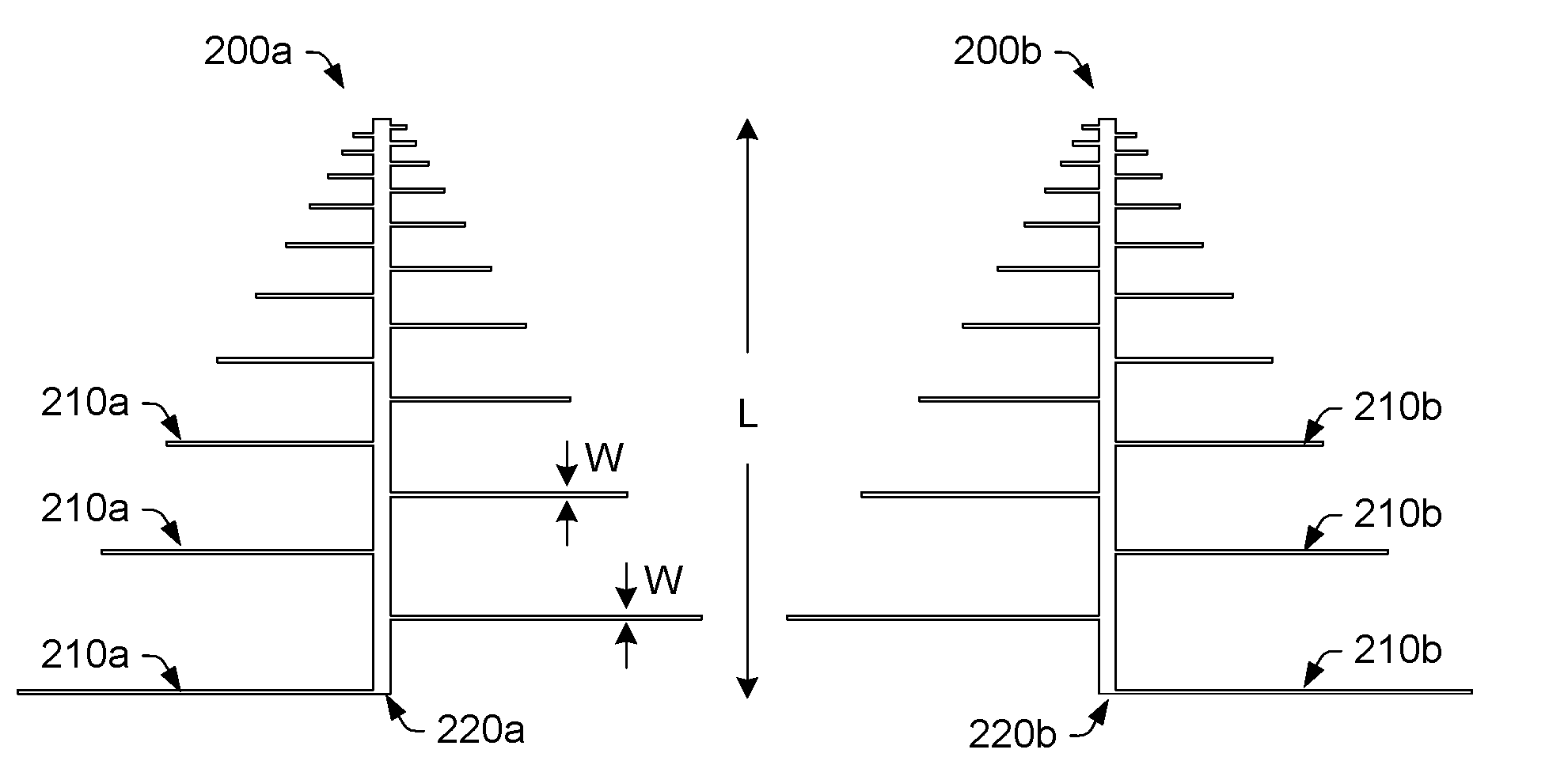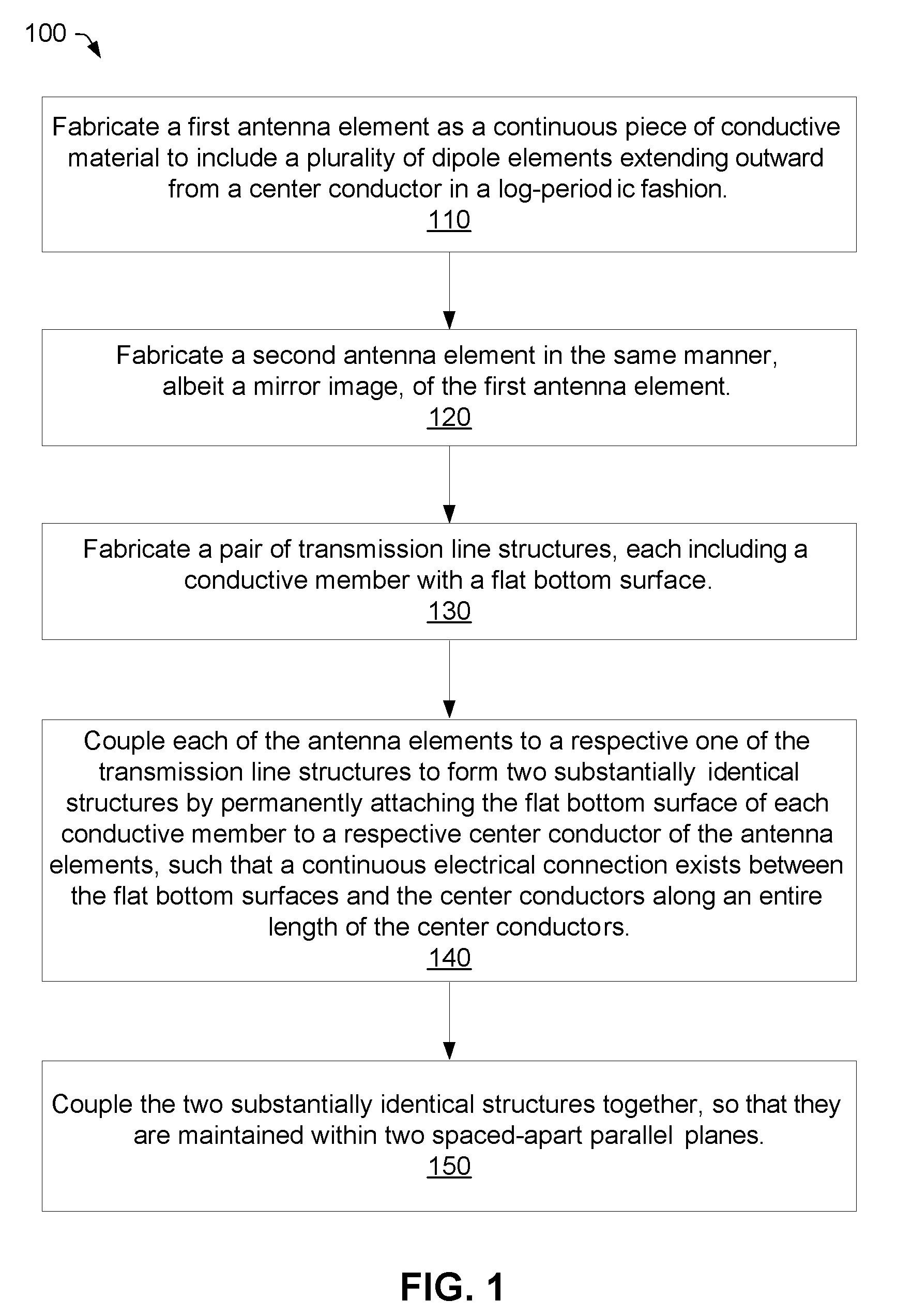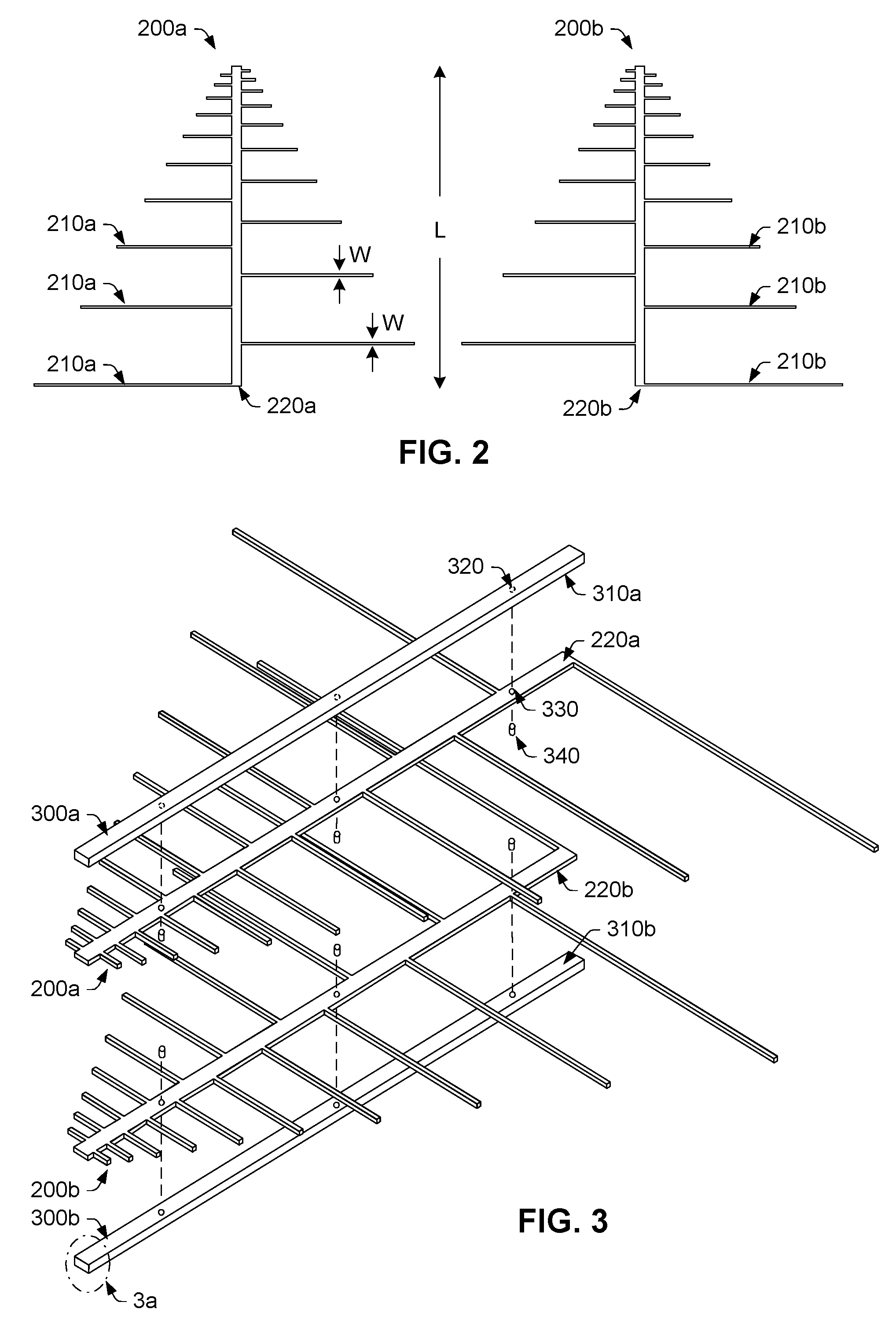Log-Periodic Dipole Array (LPDA) Antenna and Method of Making
a dipole array and dipole array technology, applied in the direction of antennas, non-resonant long antennas, electrically long antennas, etc., can solve the problems of many traditional lpda designs incorporating these techniques, few traditional lpda designs, and intermittent electrical conta
- Summary
- Abstract
- Description
- Claims
- Application Information
AI Technical Summary
Benefits of technology
Problems solved by technology
Method used
Image
Examples
Embodiment Construction
[0043]Turning now to the drawings, FIGS. 1-11 illustrate various embodiments of an improved LPDA antenna and method of making. As described in more detail below, the improved LPDA antenna overcomes numerous problems associated with both traditional and printed circuit LPDA designs. For example, the improved LPDA antenna provides a high frequency alternative to both traditional and printed circuit LPDA designs. Second, the improved LPDA antenna improves upon traditional LPDA designs by eliminating the electrical contact problem associated with thermal expansion / oxidation of the mechanical fasteners used to connect the dipole elements to the feed conductors. Third, the improved LPDA antenna improves upon printed circuit LPDA designs by eliminating the pattern disturbances associated with a dielectric substrate. Other improvements / advantages may become apparent in light of the description below.
[0044]FIG. 1 illustrates an improved method (100) for making a log periodic dipole array (LP...
PUM
| Property | Measurement | Unit |
|---|---|---|
| relative permittivity | aaaaa | aaaaa |
| frequency | aaaaa | aaaaa |
| frequency | aaaaa | aaaaa |
Abstract
Description
Claims
Application Information
 Login to View More
Login to View More - R&D
- Intellectual Property
- Life Sciences
- Materials
- Tech Scout
- Unparalleled Data Quality
- Higher Quality Content
- 60% Fewer Hallucinations
Browse by: Latest US Patents, China's latest patents, Technical Efficacy Thesaurus, Application Domain, Technology Topic, Popular Technical Reports.
© 2025 PatSnap. All rights reserved.Legal|Privacy policy|Modern Slavery Act Transparency Statement|Sitemap|About US| Contact US: help@patsnap.com



